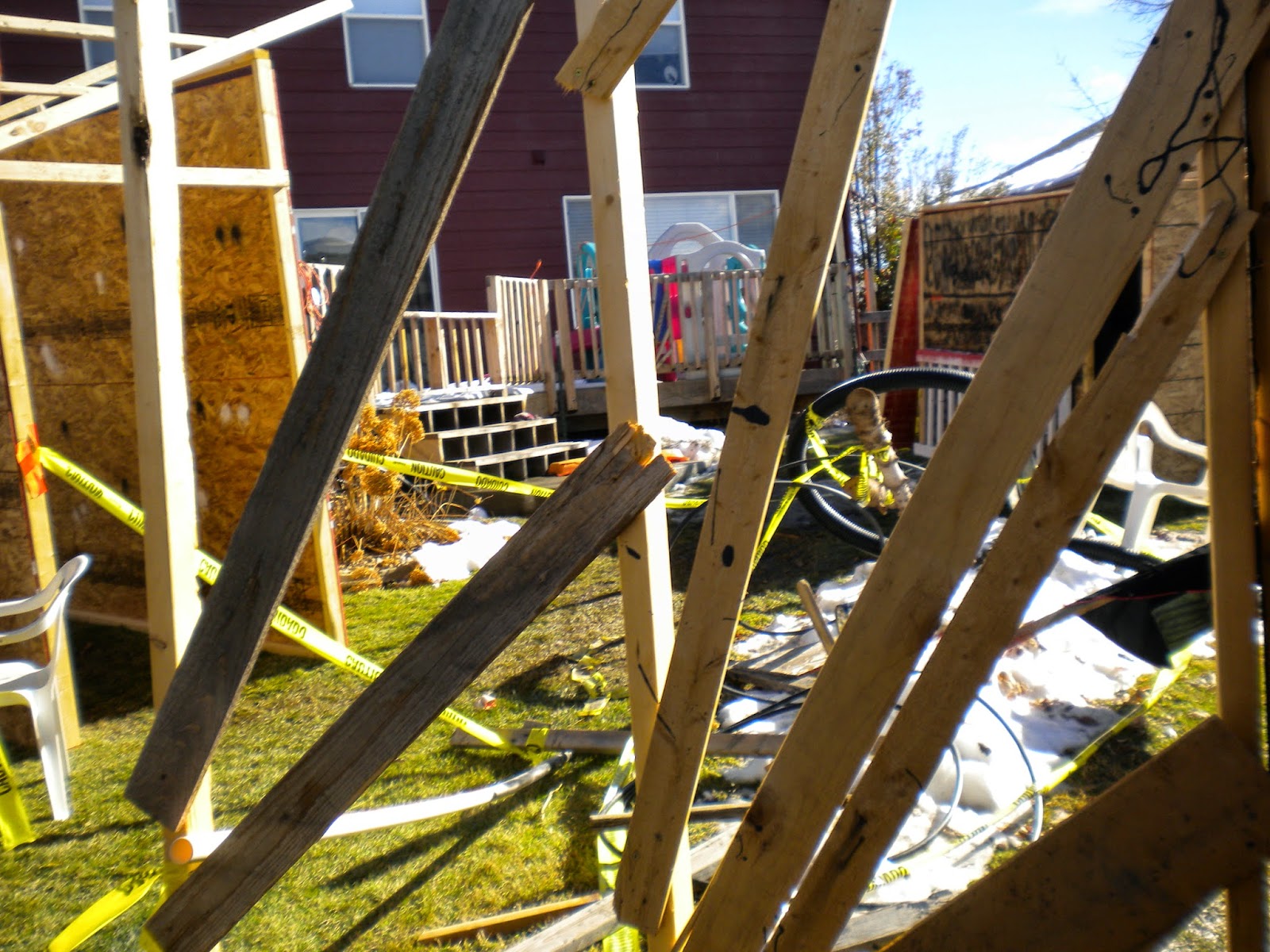Fear is without a doubt a negative emotion, one that no person in this world would willingly subject themselves to. And yet the goal in the back of any good scareactor's mind is to do just that, scare people. As such, haunted houses create quite the interesting paradox of fear-thirsty scareactors battling it out against fear-weary patrons. And this is where the question arises: Why, then, are haunted attractions fun?
Western psychology is getting there with an understanding of that question (try a Google search for opponent process theory of emotion if you want to learn more; I'm not going to delve too deeply into it). For the purposes of this post, the idea is much easier understood through the ancient Chinese concept of yin and yang, which describes, in very general terms, that in order for darkness to exist, there must also exist light. Yin and yang have been used to describe just about every aspect of human experience that any person has ever lived, but today I might be the first to apply it to the science of haunted attractions. (If at this point you're feeling skeptical of this post because of it's reliance on eastern philosophy, I assure you that Western psychology says practically the same things. I'm just referencing yin and yang instead of the opponent process theory of emotion and motivation because I think it's something that, as a whole, is easier for most people to understand. If you'd like to brush up on the western perspective on the subject, you might try the Google search above or read these few Wikipedia paragraphs to give yourself a general sense of the topic.)
Yin-yang is a concept the Chinese ancients liked to apply to everything. In psychology, it reasons that we only understand feelings because of their opposites. For instance, we only have a standard for pain because we have an understanding of pleasure. That's why, in remote, food-deprived corners of the world, children are ecstatic to receive an extra serving of rice, while at the same time gobs of fat Americans throw tantrums when restaurants serve their cheeseburgers with the wrong damn toppings. Likewise, we have a standard of relief thanks only to our experiences of fear. This, not surprisingly, is where things get interesting for us haunters.
Haunted attractions not only provide fear, they are roller coasters that drive patrons into deep intense fear before whipping a rapid U-turn and dropping them promptly in the pleasure of relief.
By creating a temporarily high standard for fear, haunted houses are able to make patrons feel a rush of relief and pleasure upon returning to what were (earlier in the evening) merely their everyday lives. To further illustrate this point, let's talk about cocaine. Drugs function similarly, but oppositely to haunted attractions. Let's imagine you've just snorted a line of cocaine off a prostitute's buttocks (bet you didn't see that one coming). Your body's going to do two things: 1) Give you a brief high that lasts between 15 and 30 minutes (according to the National Institute on Drug Abuse), and then 2) because of that high, create an inherent low that, for addicts, is characterized by withdrawal. Interestingly enough, haunted attractions create this same process in reverse, and without the health risks of drug use. First, haunted attractions immerse their patrons in a scary (ideally, terrifying) environment, then supply fear's pleasurable counterpart in the form of relief. Often, haunters do this without even knowing.
Even more interestingly, haunted attractions function as more than just a twenty-minute-long low followed by a high; they're actually composed of a series of miniature lows and highs within the whole, each playing out in its own scare or scene. For more on this, check out this video I filmed earlier this year comparing haunts to roller coasters; I think it really helps reinforce the concept from an interesting perspective:
To close out this post, here's another great thing to compare haunted attractions to: jokes. When walking through a haunted attraction, we are always on the lookout for the next actor that might attempt to scare us. Furthermore, we often find ourselves hoping that an actor won't jump out and scare us! Yet, a haunted attraction would be as useless without its pop-out scareactors as a joke without its punchline. Here, let me tell you a joke: what do vegan zombies eat? What if I just didn't tell you the answer? Wouldn't that suck? Here you are all built up and prepared for me to make you laugh, and I give you nothing. The tension you experience waiting for the punchline of a joke is almost identical to the tension haunted attractions' patrons experience as they anticipate a startle. It's the startle itself that actually causes an onslaught of pleasurable relief.
The joke's answer? Grraaaaiiiiinnnss. See what I mean about relief? I bet you feel so much better now!
And as always, Happy Haunting!
-Collin












